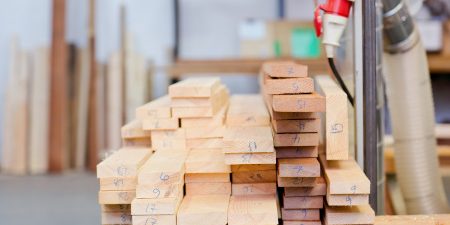Across the globe, the importance of our trees never wavers, but whilst they continually support our survival, they are also fiercely popular when it comes to home décor and construction. Through careful and sustainable use, a variety of wood types can be used in a way which causes no threat to our environment whilst providing us with a range of furniture options that each showcase diverse and unique qualities. The two main wood types commonly used across carpentry are both hardwoods and softwoods.
What is the difference between hardwood and softwood?
Whilst they may sound self-descriptive, the terms ‘hardwood’ and ‘softwood’ do not actually refer to the texture and density of varying wood types. Occasionally, you may find that hardwoods are denser than softwoods, but there will be the odd exception. Instead, there are a range of differences between the two that result in some working better than others in different areas of construction and furnishing:
Hardwood
Hardwoods come from slower growing trees, meaning that the material itself can become denser, and often darker in colour with a condensed and close grain. This can result in a wood of higher quality, typically making it more expensive to purchase.
Popular examples of hardwoods and their common uses include:
- Oak
Oak is one of the most popular hardwoods and has been used within construction for many years. With both red and white oak available, it supplies a range of possibilities and is most often used for bespoke furniture. It boasts a unique grain that mirrors the distinctive qualities of fingerprints.
- Walnut
This rich-coloured wood can be difficult to source these days, typically making it more expensive to use in construction. The straight grain and level of strength it holds makes it a popular choice for premium household furniture.
Softwood
Softwoods come from faster growing trees, and this speedier growth results in these wood types being softer in comparison to hardwoods, producing a lower costing wood. The grain of softwoods is also looser, and the colouring is lighter.
Popular examples of softwoods and their common uses include:
- Pine
Whilst pine is less hard-wearing than other hardwoods, it is commonly relied upon in construction due to its lightweight and flexible qualities. The colouring of pine can vary, often seen with either a yellow or creamy tone, and proves to be a cost-effective wood type for structural construction works.
- Redwood
Redwood holds qualities, such as resistance to decay and insect infestation, which result in the ideal softwood for outdoor furniture, from decking to benches. However, it differs from pine in the way of lower durability and sustainability.
Caring for your wood
Wood can be the ideal material for a range of construction, furniture, and home accessories, but will require correct care and maintenance to ensure it remains durable and attractive. You will more than likely be advised on how best to care for your wood once purchasing, or once construction works have been undertaken. It is important to remember that no matter how well your wood is cared for, it is still likely to evolve over time, changing in its colouring or tone and moisture levels.
For advice and guidance on the best type of wood to use for your home construction project, get in touch with our New Forest Joinery team.

